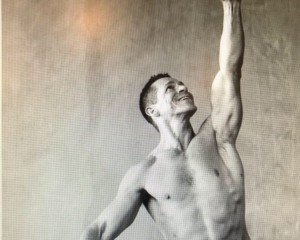
The kettlebell swing is an excellent exercise for the elderly, yet very few personal trainers have their aged clients doing this compound exercise.
Few doctors recommend it, but doctors aren’t primed towards recommending specific strength training exercises for their elderly patients.
And that’s understandable, being that a physician is more interested in the elderly patient’s bloodwork, blood pressure, heart function, medications, imaging results, etc.
So what about personal trainers?
I used to be a trainer at a gym. I had my elderly clients doing kettlebell swings.
But you’ve probably never seen a personal trainer having a 65+ client doing kettlebell swings.
Do not let this fact discourage you, if you’re over 65, from performing this exercise.

Freepik.com
Why few trainers encourage their senior age clients to do kettlebell swings.
• Believe it or not, some trainers think this exercise is risky because it involves swinging up a weight and rocking the lumbar area back and forth.
• Many trainers actually don’t even do the kettlebell swing themselves, and hence have no idea just how effective this movement is.
You might be thinking that trainers don’t promote the kettlebell swing for the elderly because this population simply cannot do it.
If an older person walked into the gym and is being guided through various exercises, they are capable of doing kettlebell swings at least to some extent. This is actually a simple move to perform.
What is a kettlebell swing?
• Stand with feet wide apart, one KB in both hands, arms hanging straight.
• Bend legs to a quarter squat.
• Keep an arch in the lower back at all times.
• With both arms straight, swing up the weight so that arms are parallel to the floor.
• Reverse this motion so that the KB goes through the legs, but do not exaggerate this.
• That was one repetition.
The description sounds like this is not something that an older, especially weak, individual should do.
But realize that the KB can be as light as five pounds. We’re not talking about one of those soccer-ball-size kettlebells! They came in ALL sizes.
Who should avoid the KB swing?
• A person who has a back condition for which this exercise causes pain. For instance, spinal stenosis; the person should discuss this with their spinal doctor.
• Someone whose shoulder is in such bad shape that even swinging up five pounds in both hands causes considerable pain.
If the movement causes discomfort anywhere in the body, the person should talk to their doctor about this — ideally a doctor who specializes in that area of the body.
It’s possible that the discomfort can be resolved with the KB swing.
For instance, if it’s determined that shoulder discomfort is from stiff, weak shoulders, the KB swing will help loosen up and strengthen the shoulder joint.
Benefits of the Kettlebell Swing for People over 65
“Kettlebell swings may be very beneficial to the senior who wants to stay healthy and stay active,” says Steve Cotter, Director, International Kettlebell and Fitness Federation (IKFF).
“The KB swing is an effective conditioning exercise and core strength developer. However, it can also be intimidating.
“The key to ongoing success for the active senior is to start with a very light weight (such as 10 lb, not heavy for a KB) and gradually build the volume of repetitions before increasing the weight.
“This is because the postural muscles of the low back/core respond very well to endurance training (higher reps), and also keeping the weight light and increasing reps will reinforce safe lifting form, before proceeding to a heavier load.
“Also be sure to do plenty of mobility movements before and after the kettlebell swings to keep the joints loose and warm.”
How does an elderly person get started with the kettlebell swing?
Some “elderly” people are in fine shape. They regularly visit the gym and have been doing strength training for a long time.
It’s just that it’s never dawned on them to do this particular exercise. They can start with a light weight as Cotter recommends and work up, doing anywhere from eight to 15 repetitions per set.
I recommend a weight that’s lighter than what you think you can handle for 15 reps.
This is because the kettlebell swing will recruit your back muscles in a way that other back exercises do not.
If you start out with a heavy weight—even if you can do eight reps—you’re bound to have a sore back the next day.
So be humble and start out with maybe 10 or even five pounds. Gradually work up to heavier weights, but make your incremental increases by no greater than five pounds.
For de-conditioned elderly people who are new to strength training, practice the MOTION of the kettlebell exercise first.
The motion, minus the KB, can be taxing to the frail elderly after just eight reps.
Work up to 20 reps before introducing a five pound KB. In fact, I recommend a two pounder if the gym has one.
Summary of Benefits of Kettlebell Swings for the Elderly
• Works the entire body; involves multiple joints at the same time.
• Works the lower and middle back and also the abs.
• Strengthens the shoulders, hips and legs.
• Improves balance without requiring a lot of balance.
• Does not involve any impact on the joints.
• Is done while standing, which will make the activities of daily living easier.
 For 30+ years Steve Cotter has promoted body-mind fitness around the world through martial arts, qigong, mobility, flexibility and kettlebell training.
For 30+ years Steve Cotter has promoted body-mind fitness around the world through martial arts, qigong, mobility, flexibility and kettlebell training.
 Lorra Garrick is a former personal trainer certified through the American Council on Exercise. At Bally Total Fitness she trained women and men of all ages for fat loss, muscle building, fitness and improved health.
Lorra Garrick is a former personal trainer certified through the American Council on Exercise. At Bally Total Fitness she trained women and men of all ages for fat loss, muscle building, fitness and improved health.
.









































